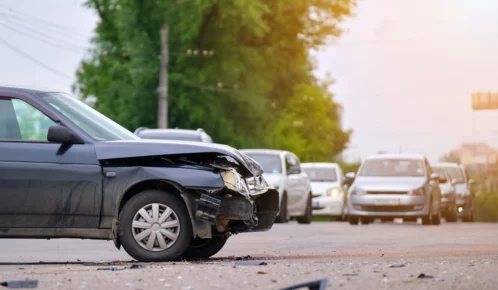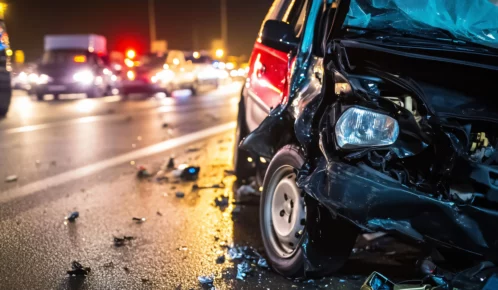After getting a phone call that no parent wants to get, Scott N. made one that helped his family navigate a severe injury and long recovery. A school science experiment gone wrong left his young daughter with second and third-degree burns on her face and hand that required months of treatment.
Table of Contents

Howard began working on the case himself after speaking to Scott, who was referred to Ankin Law by a family member. Howard researched the future medical issues that would impact his young client. Ankin Law medical malpractice attorney Jeff Schulkin later joined the team, leveraging Jeff’s expertise in the medical field to secure a significant settlement.
“Ankin Law has the resources to handle complex injury cases like this one,” said Howard. “Our legal team conducted extensive research and attorney Jeff Schulkin identified an expert witness to project future risks of injury due to the underlying nature of the burn.”
The firm also provided structured investments of settlement proceeds to provide funds for future treatment.
“No matter what the risks of future injuries are, the resources are in place to deal with whatever may come up,” said Jeff. “To be able to help out on a case like this is a wonderful feeling.”
What Are the Levels of Burn Injuries?
Burn injuries are classified into four main levels, each indicating the severity and depth of the burn:
- First-Degree Burns: Affect only the outer layer of the skin (epidermis). Symptoms include redness, minor swelling, and pain. Typically heal within a week without scarring.
- Second-Degree Burns: Extend into the dermis (the second layer of skin). They cause red, blistered skin, severe pain, and swelling. Healing may take several weeks and can result in scarring.
- Third-Degree Burns: Penetrate through the dermis and affect deeper tissues. The skin may appear white, charred, or leathery. These burns often require skin grafts and can cause significant scarring.
- Fourth-Degree Burns: Extend beyond the skin into muscles, tendons, or bones. They are the most severe, requiring complex medical treatment, and often result in functional impairment.
The child in the above-mentioned case suffered second- and third-degree burns to her face and hand. These deep, painful burns can cause permanent damage to her skin and tissue, even after treatment is received.
The Lifelong Impact of Childhood Burn Injuries
Childhood burn injuries can have profound, lifelong impacts, affecting physical, emotional, and social aspects of a person’s life. Physically, severe burns can lead to permanent scarring and contractures, which may require multiple surgeries and physical therapy throughout life. These physical changes can impact mobility and flexibility, potentially impacting daily activities and self-care.
Emotionally, burn survivors often face psychological challenges, including anxiety, depression, and post-traumatic stress disorder (PTSD). The trauma of the injury, coupled with ongoing medical treatments and visible scars, can lead to a negative self-image and issues with self-esteem. Socially, children with significant burn injuries may experience bullying or social exclusion, which can further impact their mental health and social development. These challenges can persist into adulthood, impacting their relationships, career prospects, and overall quality of life.
Additionally, the long-term care and medical needs for burn survivors can be extensive, including regular follow-ups with specialists and ongoing rehabilitation. The financial burden on families can be substantial, contributing to stress and impacting the overall well-being of the family unit.
Support systems, including psychological counseling, community support, and rehabilitation services, play a crucial role in helping burn survivors navigate these challenges. Early intervention and comprehensive care can improve outcomes and help individuals lead fulfilling lives despite the lasting effects of their injuries.
When Can You Sue a School for a Child’s Injury?
You may sue a school for a child’s injury if the school is found negligent in its duty of care, meaning it failed to provide a reasonable level of safety or supervision. Grounds for a lawsuit typically include:
- Negligent Supervision: If the school failed to supervise children appropriately during activities or transitions, leading to injury, they can be held accountable.
- Unsafe Conditions: If the school premises had hazardous conditions (e.g., broken playground equipment or unsafe buildings) that were known or should have been known to the school, and these conditions caused the injury, there may be grounds for a claim.
- Failure to Follow Protocols: Parents may be able to sue if the school did not adhere to established safety protocols or procedures, and this lapse led to the injury.
- Medical Negligence: The school can be held liable if its response to a medical emergency was inadequate or delayed, causing harm to the child.
To succeed in a lawsuit, you must prove that the school’s negligence directly caused the injury and that the injury resulted in damages (e.g., medical expenses, pain and suffering). A personal injury lawyer can help determine the viability of a claim.



